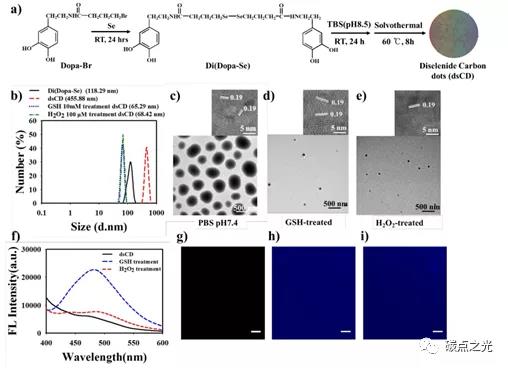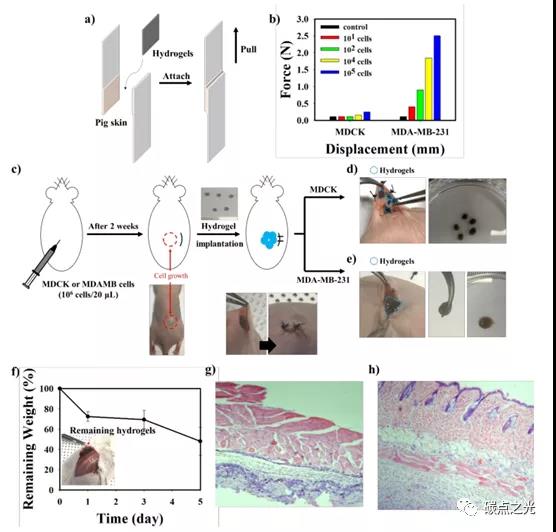Carbon dot hydrogel ASC Nano: for label-free breast cancer detection
QQ Academic Group: 1092348845
Detailed
Hydrogels are emerging materials that have applicability in biosensing applications, especially those involving cancer detection. Because it can distinguish between the normal state and the tumor state of glutathione (GSH) and reactive oxygen species (ROS) concentration. According to reports, compared with normal cells in the tumor environment, the concentration of GSH is four times that of normal cells, and ROS is ten times that of the latter. In addition, adjusting the hydrogel matrix with redox-reactive functional groups can target cancer cells and use redox reactions to monitor biochemical reactions to detect disease. Even if there is a detection system such as positron emission tomography/computed tomography (PET/CT), it still has some defects. Therefore, it is very necessary to develop biocompatibility for self-repair of cancer and electronic signal response sensor.
Professor Sung Young Park and others have developed a redox-reactive self-repairing carbon dots (CDs) hydrogel that can detect the cancer environment and distinguish various electronic signals that appear during treatment in a redox environment. The title of "Diselenide-Bridged Carbon Dot Mediated Self-Healing, Conductive, and Adhesive Wireless Hydrogel Sensors for Label-Free Breast Cancer Detection" was published in ACS Nano. The use of ureidopyrimidone conjugated gelatin (Gel-UPy) combined with selenium-containing CDs for cancer detection, GSH or ROS cleavage of the selenium bond groups of the CDs in the hydrogel will trigger the formation of hydrogen bonds, which affects Gel-UPy/CDs hydrogel self-healing ability, electrical conductivity and adhesion. Compared with the results observed under physiological conditions, Gel-UPy/CDs hydrogels show faster healing under tumor conditions. In addition, the gel also has excellent in vivo cancer detection capabilities, which is in contrast to low concentration environments. The results observed below are comparable.

Figure 1: Synthesis and characterization of CDs.

Figure 2: Gel-UPy/CDs hydrogel for in vitro adhesion and in vivo cancer detection.
Based on the comprehensive self-healing, conductivity and adhesion of Gel-UPy/CDs, this hydrogel is used in biomedical applications due to its selectivity and sensitivity under tumor conditions (especially biomedical applications involving cancer detection ) Shows broad prospects.
Article link:
Professor Sung Young Park and others have developed a redox-reactive self-repairing carbon dots (CDs) hydrogel that can detect the cancer environment and distinguish various electronic signals that appear during treatment in a redox environment. The title of "Diselenide-Bridged Carbon Dot Mediated Self-Healing, Conductive, and Adhesive Wireless Hydrogel Sensors for Label-Free Breast Cancer Detection" was published in ACS Nano. The use of ureidopyrimidone conjugated gelatin (Gel-UPy) combined with selenium-containing CDs for cancer detection, GSH or ROS cleavage of the selenium bond groups of the CDs in the hydrogel will trigger the formation of hydrogen bonds, which affects Gel-UPy/CDs hydrogel self-healing ability, electrical conductivity and adhesion. Compared with the results observed under physiological conditions, Gel-UPy/CDs hydrogels show faster healing under tumor conditions. In addition, the gel also has excellent in vivo cancer detection capabilities, which is in contrast to low concentration environments. The results observed below are comparable.

Figure 1: Synthesis and characterization of CDs.

Figure 2: Gel-UPy/CDs hydrogel for in vitro adhesion and in vivo cancer detection.
Based on the comprehensive self-healing, conductivity and adhesion of Gel-UPy/CDs, this hydrogel is used in biomedical applications due to its selectivity and sensitivity under tumor conditions (especially biomedical applications involving cancer detection ) Shows broad prospects.
Article link:
Won H J,Ryplida B, Kim S G, et al. Diselenide-Bridged Carbon Dot Mediated Self-Healing, Conductive, and Adhesive Wireless Hydrogel Sensors for Label-Free Breast Cancer Detection. ACS Nano, 2020. DOI: 10.1021/acsnano.0c02517
https://pubs.acs.org/doi/abs/10.1021/acsnano.0c02517
Source of information: Carbon Point Light
This information originates from the Internet for academic exchange only. If there is any infringement, please contact us to delete it immediately
- Previous: 3D printed MOFs loaded
- Next: A Rising 2D Star: Nove


 Academic Frontier
Academic Frontier